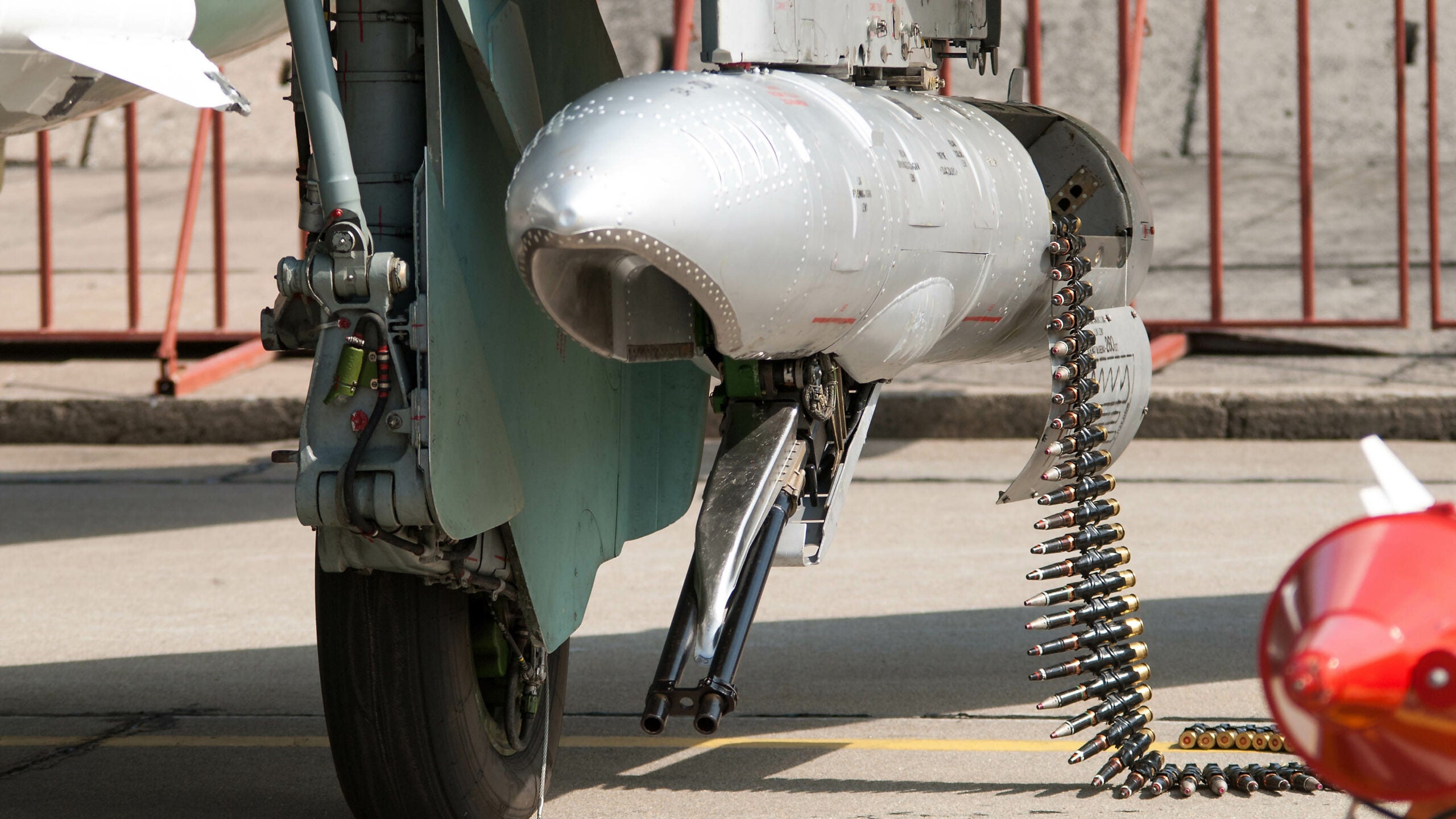Despite manufacturers’ and air forces’ efforts to do away with gun armament on aircraft in the earlier years of the Cold War, these weapons consistently proved their utility and never went away. It was the Soviet Union’s efforts to boost the firepower of its tactical jets that saw some of the most radical ways of putting more guns on aircraft, with some ingenious podded weapons capable of firing forward, backward, and even sideways.
Paralleling developments in the United States, the Soviet Union’s first fighter jets after World War II were provided with guns as their main armament, before, in the late 1950s, guns began to be done away with altogether, leaving fighters armed with (not always reliable) guided missiles. But the lessons of close air combat in the Middle East and Southeast Asia during the 1960s showed that guns were still vital in many air combat situations. At the same time, the increasing importance of ground-attack missions also called for gun armament — typically of the heavier-hitting 23mm or 30mm caliber in the Soviet Union.
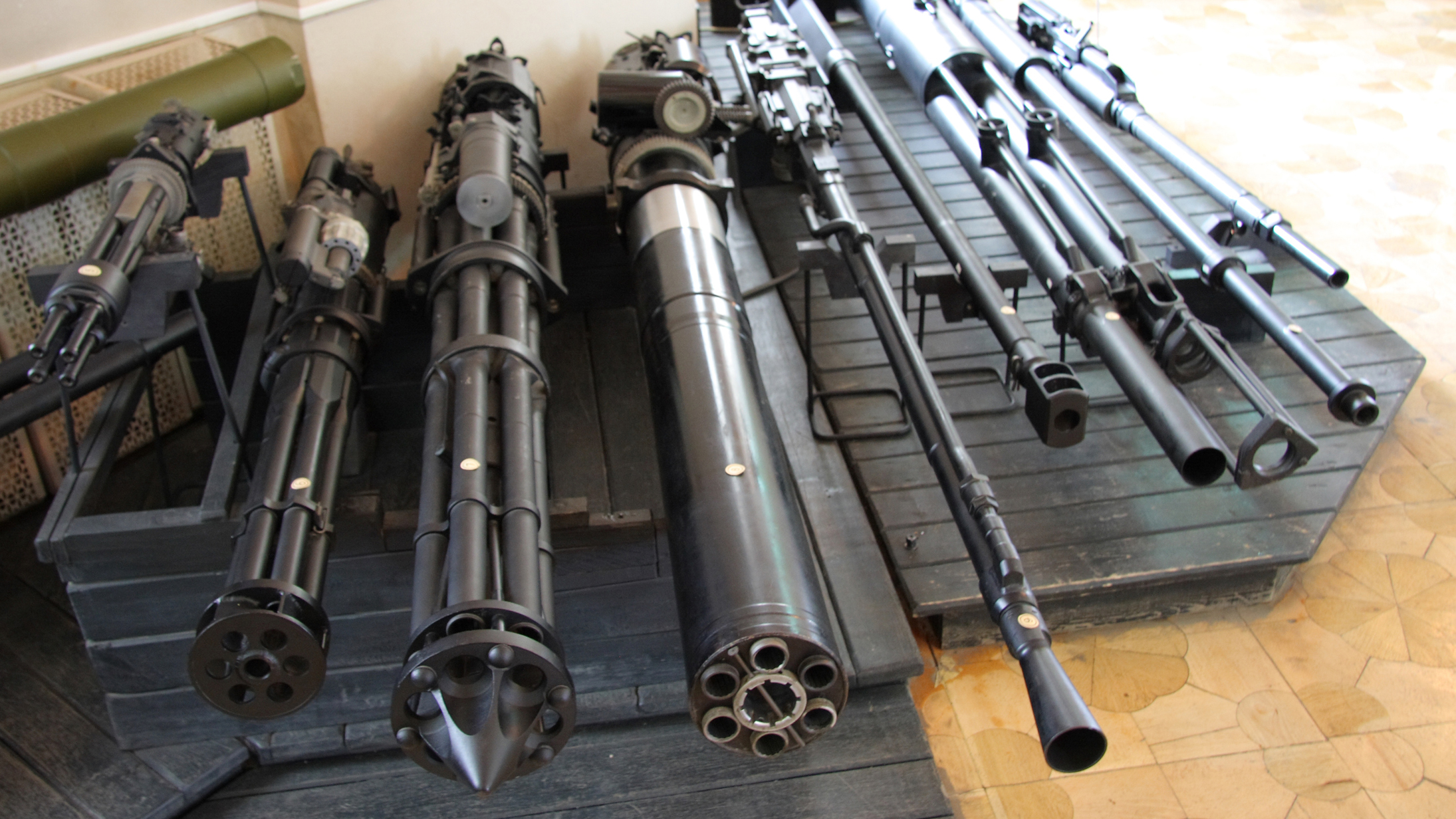
By the early 1970s, a new generation of attack-optimized, gun-armed tactical fighter jets were beginning to be fielded by the Soviet Union, and to provide even greater firepower, development was also underway on a range of increasingly ingenious, and potentially devastating gun pods.
In 1971, the Soviet launched production of a gun pod for tactical jets and assault helicopters that simply lifted the 23mm GSh-23 autocannon from the late-model MiG-21 Fishbed and MiG-23 Flogger fighters and installed it in a “unified gun container,” Unifitsirovannyi Pushechnyi Konteyner in Russian, or UPK-23-250 to give it its full name.
As well as the twin-barreled GSh-23 series cannon, the 10-foot 5-inch UPK-23-250 carries 250 rounds of ammunition and an electrical drive unit. More conventional than the pods that followed, the UPK-23-250 is aimed by simply directing the aircraft toward the target. Nevertheless, it remains in production and is now the most widely used gun pod in the Russian inventory, arming a wide range of tactical jets and rotorcraft.
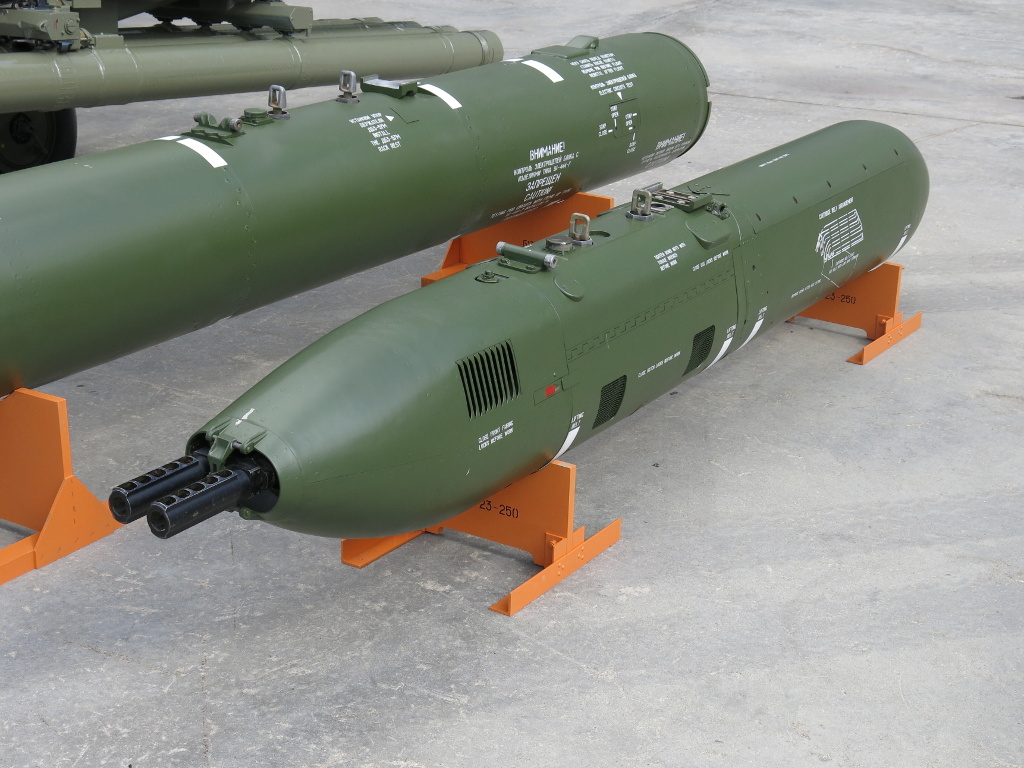
While the UPK-23-250 has proven reliable and hard-hitting, it has always been constrained by the requirement of the pilot to keep flying directly toward the target being attacked, putting their own aircraft at risk of counter-fire from the ground. One way to avoid this was a movable gun mount, allowing targets to be engaged ahead of the aircraft’s flight path (if firing forward) or behind the aircraft (if the pod was mounted firing to the rear). In the post-war era, at least, it seems that only the Soviet Union developed and fielded these types of weapons.
The initial result was the “detachable movable gun mount,” or Syomnaya Podvizhnaya Pushechnaya Ustanovka, and the first of these to be fielded was the SPPU-22-01. This again uses the proven twin-barreled GSh-23 cannon, with 250 rounds of ammunition. The barrels are mounted on an articulated mechanism that angles them 23° downwards, with the flight computer ensuring that they continue to track the target as the aircraft maneuvers. The angle of the gun has to be selected prior to the mission and can’t be changed once in flight.
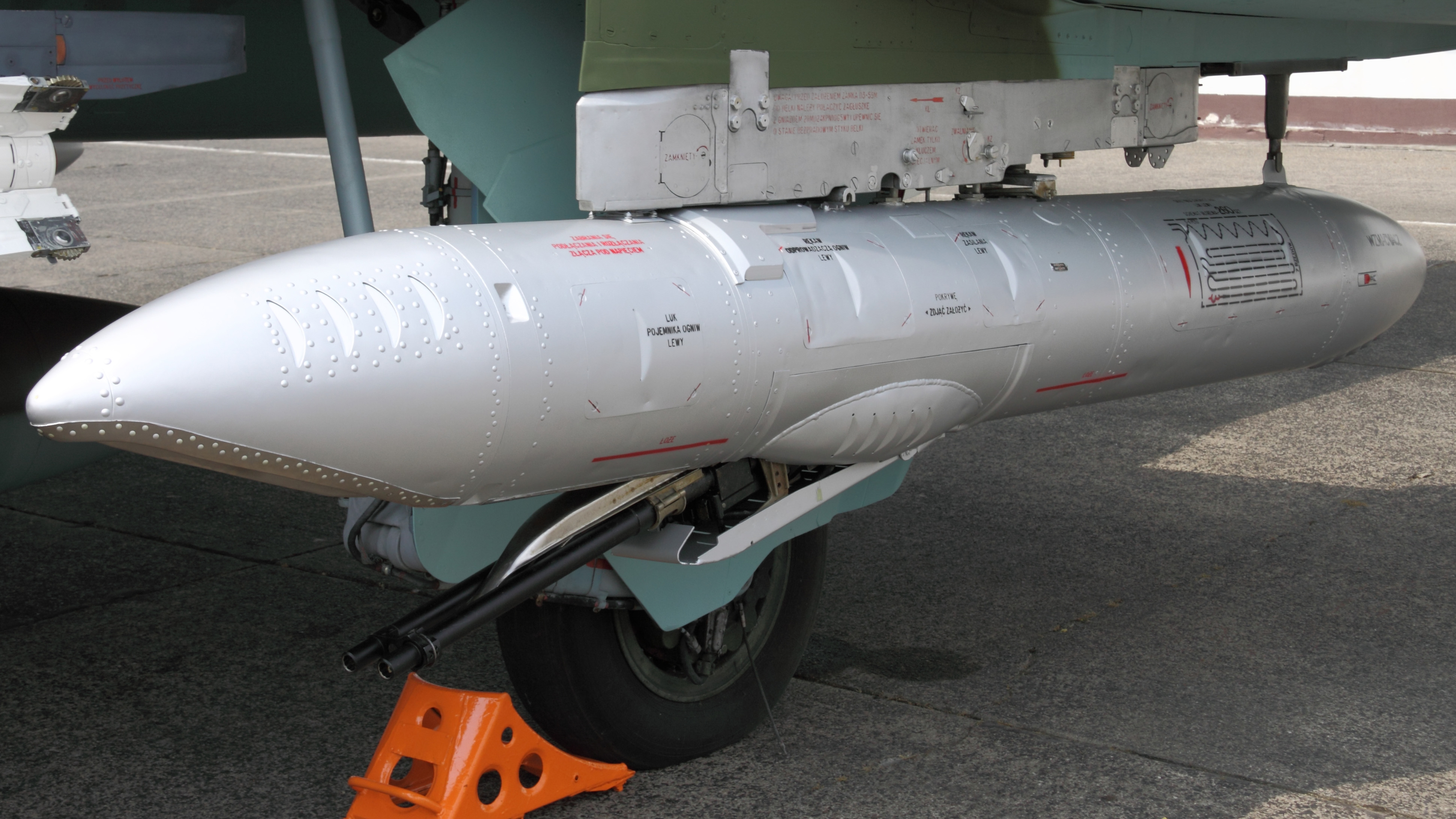
Weighing 705 pounds when loaded with ammunition, the 12-foot 6-inch SPPU-22-01 is primarily associated with the Su-17/Su-22 Fitter swing-wing ground-attack aircraft — it’s possible, in fact, that the ‘22’ in the pod’s designation refers to this platform.
Both these gun pods feature twin-barreled cannons in which the firing action of one barrel operates the mechanism of the other. This reduces the wear compared to a single-barrel arrangement and also ensures a faster rate of fire. However, by the mid-1970s, the Soviet Union was working on rotary cannons, similar in principle to the classic American M61 Vulcan. While the U.S. gun fires 20mm ammunition, the Soviets always preferred larger calibers, either 23mm or 30mm. Six-barrel rotary cannons were produced in both these forms and armed the MiG-31 Foxhound interceptor and Su-24 Fencer strike aircraft (both 23mm), as well as the MiG-27 Flogger ground-attack aircraft (30mm).
The six-barrel 30mm weapon also found its way into the AK-630 series of naval artillery for close-in air defense of warships and later provided the gun component for both the land-based Tunguska and Pantsir family, plus the naval Kortik/Kashtan combined gun/missile air defense systems.
A video showing the Kortik combined gun/missile air defense system firing its 30mm guns onboard a Russian Navy warship:

Meanwhile, the six-barrel 23mm gun, the GSh-6-23, was adapted for the most unusual Soviet gun pod yet, the SPPU-6, which entered production in 1976. This retains the articulated mounting proven in the SPPU-22-01, but this time, the entire gun assembly can be tilted 45° downwards, as well as 12° to the side, obviating the need for the aircraft to dive directly toward the target. While the previous pods with moveable guns were depressible only, this new weapon could move on two axes.
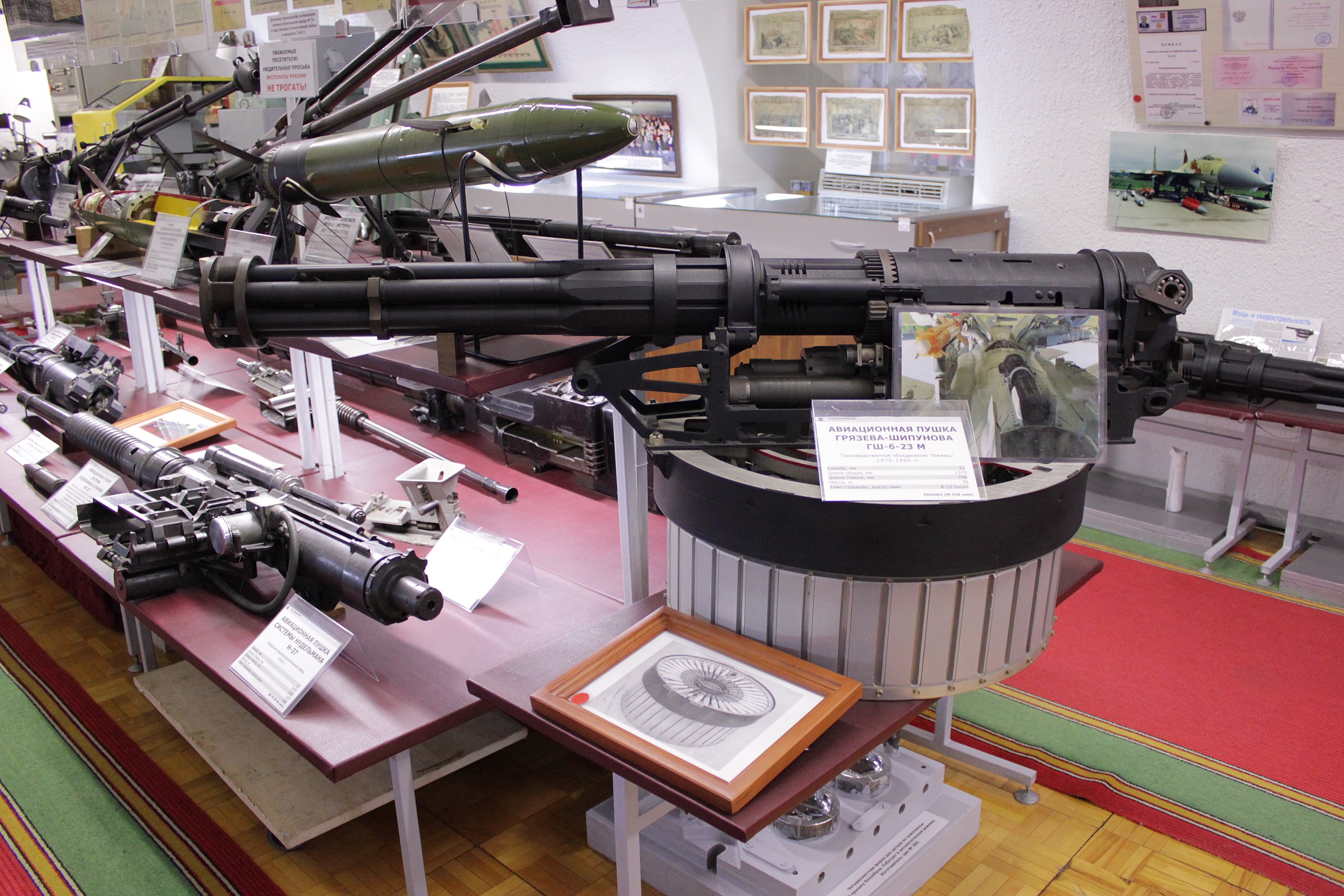
The 16-foot 7-inch low-drag pod also contains the gun control system and 400 rounds of ammunition. The total weight, when loaded, is over 1,150 pounds. Again, the pod can be mounted with the barrels facing forward, or to the rear of the aircraft, for strafing in the rear hemisphere. Furthermore, both “left-handed” and “right-handed” versions of the pod were produced, with the cannon mounted on different sides. The only aircraft so far confirmed to carry the pod is the Su-24, which can carry a maximum of three.
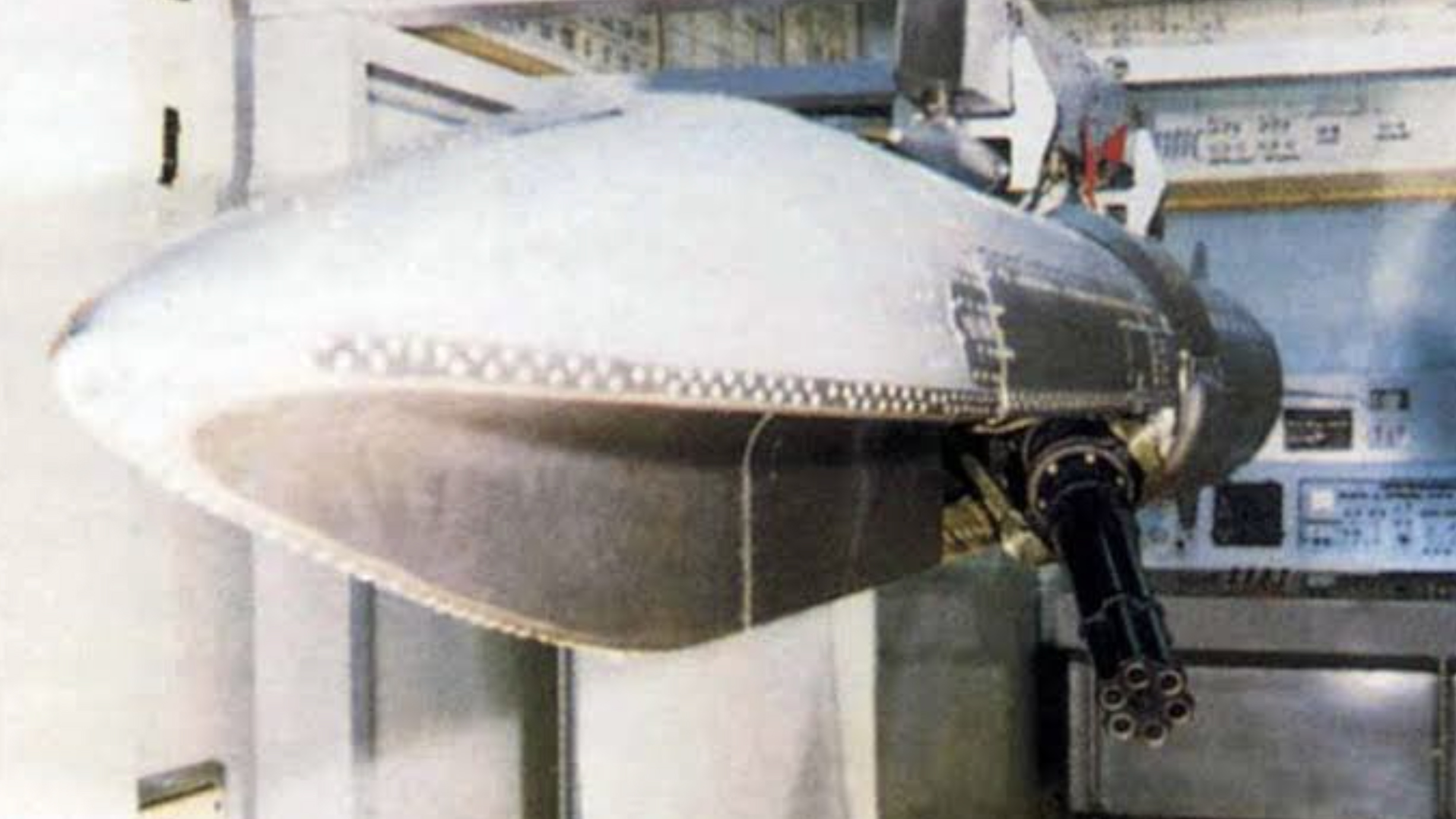
The SPPU-6 has been rarely seen in service, suggesting it may not have been as successful as hoped, but it can be imagined that, at the very least, it could have an enormous psychological effect on any troops unfortunate to be confronted by it. In effect, it would turn a Su-24 into a supersonic gunship, with trainable Gatling guns under the wings, one more under the belly, plus a similar weapon in the standard fixed installation under the fuselage. Having said that, the duration of fire provided by the pods, at least, is strictly limited. With a rate of fire of 4,000 to 6,000 rounds per minute, the ammunition in each pod would be exhausted in as little as four seconds.
The SPPU-6 gun pod was intended for fixed-wing aircraft, and its considerable weight and recoil meant it was only suitable for larger attack aircraft. However, thought was also given to developing smaller, lighter pods specifically to arm assault helicopters. In the late 1970s the Vympel design bureau, famous for its work on air-to-air missiles, developed the GUV-8700, GUV standing for Gondola Universalnaya Vertolotnaya, or universal helicopter pod.
The GUV-8700 is modular, with two different loading possibilities. In its simplest form, it contains a single 30mm Plamya-A grenade launcher with 300 grenades, adapting the popular infantry weapon for aircraft use. The other option contains one YakB-12.7 .50-caliber machine gun with 750 rounds and two GShG-7,62 .30-caliber machine guns with 1,800 rounds each. Each of these guns is a four-barreled rotary type, the GShG-7,62 being the equivalent of the iconic M134 Minigun. When loaded, the 9-foot 10-inch GUV pod weighs just under 1,000 pounds.

One further Soviet gun pod from this period is known, this time in 30mm caliber, although it seems never to have progressed beyond the prototype stage. This was the SPPU-687 pod with a depressible mounting carrying a single-barrel GSh-30-1 cannon, of the same type used in the MiG-29 Fulcrum, Su-27 Flanker, and others. The pod reportedly carried 200 rounds, but little more is known of the project.
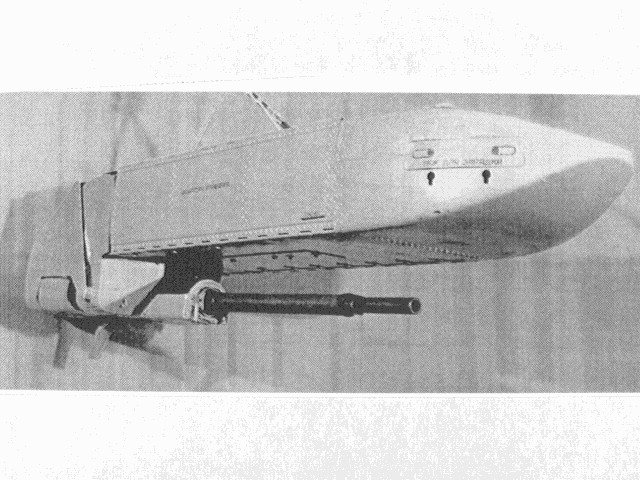
As long-term proponents of artillery, it’s perhaps little wonder that the Soviets went to such great efforts to turn their combat aircraft into “flying artillery,” too. Today, however, most of these weapons are rarely seen, with only the UPK-23-250 enduring. Exactly why they have generally fallen from favor is unclear, but the rapid removal of the MiG-27 and Su-17 from service soon after the Cold War ended couldn’t have helped.
Overall, these weapons were likely somewhat limited in terms of accuracy and complex to operate. It could also be that the vibration of the larger gun pods had an adverse effect on aircraft airframes, and their fall from favor may also be related to changes in tactics, focusing on standoff range wherever possible. On the other hand, Russian tactical aircraft do still make considerable use of unguided bombs and rockets, which have limitations in terms of range and accuracy. Whatever the reason, these gun pods remain some of the most intriguing aircraft weapons developed in the post-war years.
Contact the author: thomas@thedrive.com
